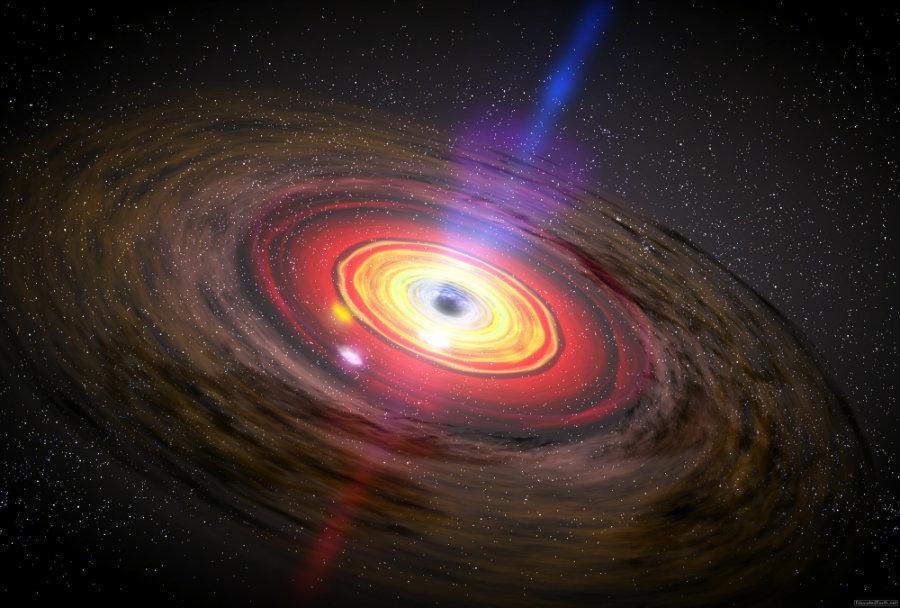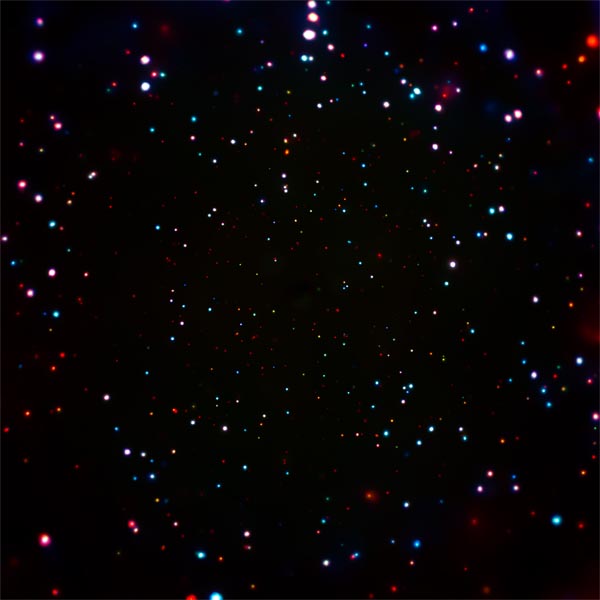While reviewing data provided by NASA, astronomers including Ady Annuar from the University of Durham’s Centre for Extragalactic Astronomy, announced the discovery of two supermassive black holes extremely close to the Milky Way.
Annuar compared the discovery to finding a “monster hiding under your bed.” The black holes corresponded to the nucleus of two nearby galaxies known as NGC 1448 and IC 3639, which are 38 million and 170 million light years away respectively.

Two supermassive black holes in our cosmic backyard
Researchers were examining data coming from NASA’s nuclear spectroscopic telescopic telescope array orbiting observatory, or NuSTAR when they discovered the nearby supermassive black holes, hidden by gargantuan clouds of gas and dust that surrounded them. These clouds made it so they could not be directly observed using telescopes. For the discovery, the team used deep X-ray imaging.
NGC 1448 was found to have a lot of young stars, which are 5 million years old in average while the sun is at least 5 billion years old. This implies that the galaxy has not stopped producing stars even if its supermassive black hole keeps consuming whatever lies around it.
The research team confirmed that neither of the discovered black holes posed any threat to humans, instead, that they would be ideal for studying the properties of such cosmic regions.
Black holes are regions of spacetime whose gravity field is so strong that not even light can escape from them. Supposedly, a mass that is extremely dense and compact can bend spacetime and form one. It was then discovered that they can be formed when massive stars collapse after they run out of fuel. The newly-formed black hole is then able to grow by absorbing whatever lies around it.
Black holes cannot be observed, but their existence can be confirmed by seeing how it interacts with matter and electromagnetic radiation. They tend to form an accretion disk, much like our galaxy, which is then heated by friction and thus forming the bright galaxies that we know. Last February, it was confirmed that they could collide and create gravitational waves.
Now, supermassive black holes, or SMBHs, are the largest type of black holes, which are as massive as billions of suns. These are what the center of most massive galaxies are comprised of. In our case, the Milky Way’s supermassive black hole resides in a region known as Sagittarius A*.
Supermassive black holes are more likely to grow due to the accretion of matter and if it collides with another black hole. The most likely theory for the origin of an SMBH is the explosion of massive stars which take the time to grow by consuming the matter surrounding it. Sagittarius A* is located 26,000 light-years from the Solar System.
X-rays allow us to observe black holes
The discovery was assisted by the lower energy X-ray observations from the Chandra observatory, which corresponds to a compound image containing a plethora of black holes, captured in sessions adding to eleven and a half weeks from 1999 up to 2016. The Chandra Deep Field-South is the deepest X-ray image ever compiled, also showing the highest concentration of supermassive black holes ever devised. In comparison, a region in the image equivalent to the earth’s area would contain 2×1012 black holes. The ones in the observation are billions of years old, which allowed scientists to learn that these regions came to be in bursts, rather than individually.

The black holes present in the Chandra observations were formed by stars that were ten to twenty thousand times more massive than our sun, which proves why these regions came to grow so quickly and so violently. The image was presented at the latest meeting American Astronomical Society by Neil Brandt, from Pennsylvania State University. It samples 1008 discernible light sources emitting X-rays.
The image was compiled by capturing individual photons as they were detected, which means that it is not a regular photograph, but rather a time-lapse of a large region in space.
Although researchers do know that black holes and galaxies are closely related, there is still no possible theory linking the growth of galaxies and black holes. The latest proposal, also from Pennsylvania State University, comes from Guang Yang, who assures that the increase of both of these cosmic events is connected due to the total stellar mass rather than the number of new stars that become a part of the galaxy.
Since 1999, the Chandra X-ray Observatory has been the primary source of X-ray astronomy observations for NASA. It is a telescope with the objective of detecting emissions from hot regions in the universe, more specifically stars, clusters of galaxies, and the surrounding areas of a black hole. Chandra must reside in space due to earth’s atmosphere being able to absorb most of the X-rays emitted from cosmic sources.
Source: 229th AAS Meeting
